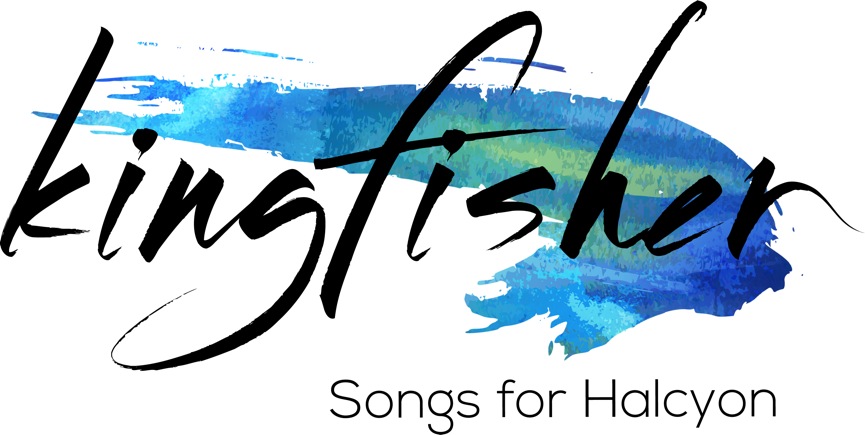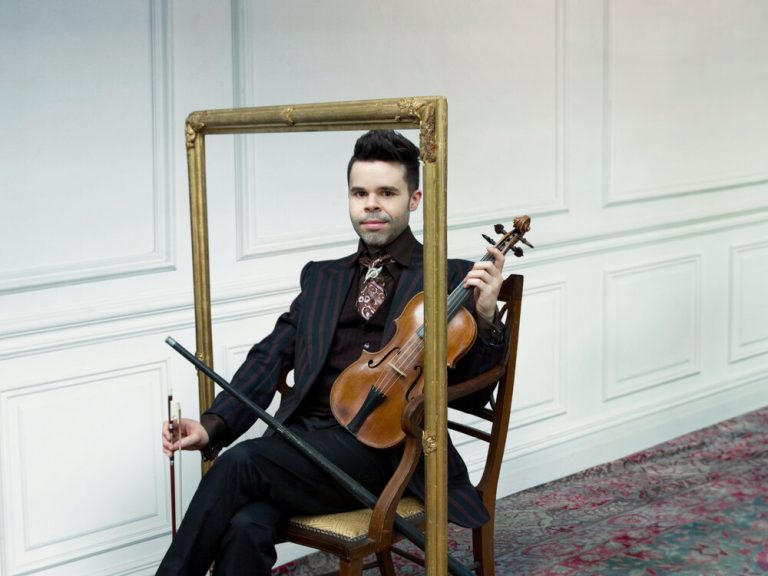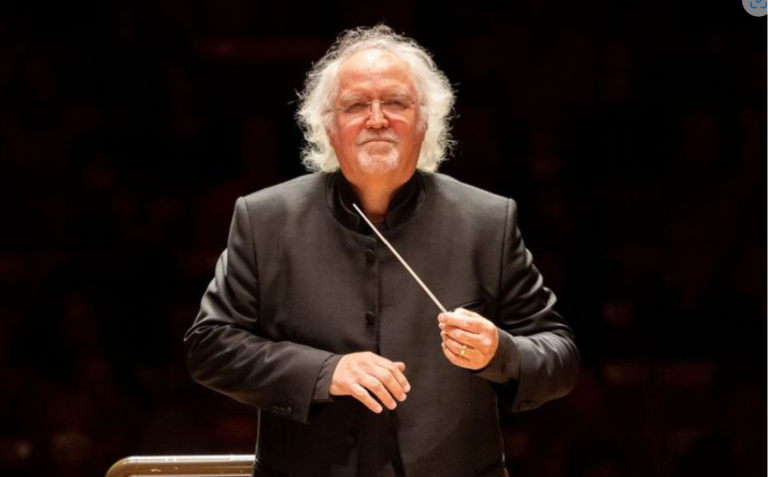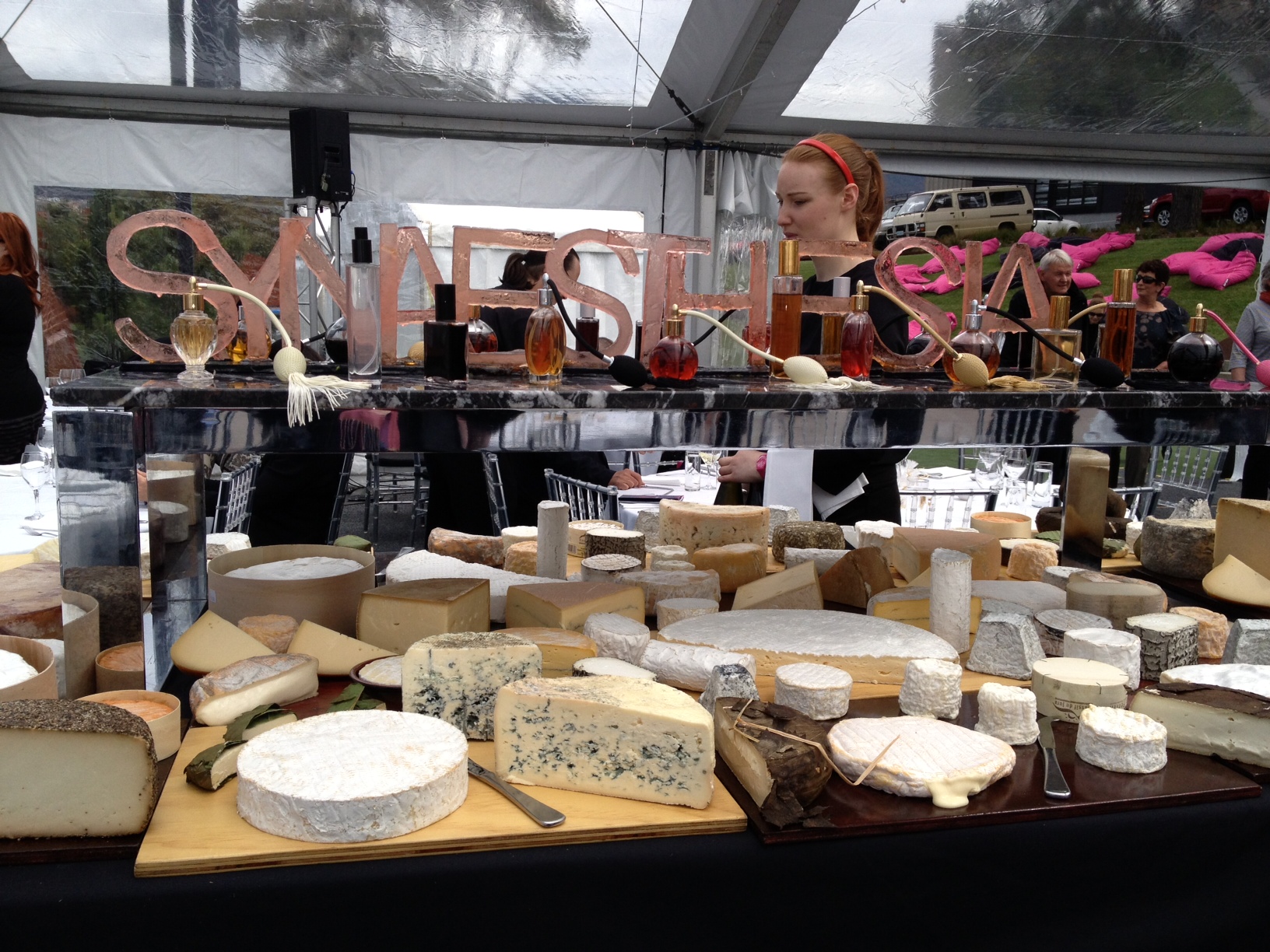Concert Review: Paranoia x Demon Ducks x Frankenstein x DC Universe: A Bonanzaic Palooza
Concert Review: Paranoia x Demon Ducks x Frankenstein x DC Universe: A Bonanzaic Palooza
Momentum Ensemble Australian Youth Orchestra, Rachelle Durkin soprano, Christoph Altstaedt conductor
Cellblock Theatre, Sydney, 19 April 2024.
Demon Ducks and Pandemonium!! is a multimedia presentation combining theatre and orchestra, which takes us back in time to a place called Brueghelland; to places where megafauna rock and roll’d and to a demonised version of our childhood nursery rhymes. It features the Momentum Ensemble of the Australian Youth Orchestra, which is a small chamber orchestra, a soprano and even a kazoo. The works performed are Mysteries of the Macabre by Ligeti, arranged by Howarth, the world premiere of A Mega Masquerade by Nicholas Vines and Frankenstein!! by HK Gruber.
Although the audience was warned that the performance would feature macabre themes. Little did I foresee just how deadly the show would be. Set in a former prison, hence the “Cell Block Theatre,” we were soon wedded with the spirits of Mary Shelley, giant chicken nuggets from the old and even shaking hands with a crazed security guard. Who would have thought that tonight was the night that the TARDIS would appear before us?
We step out of the time machine in 1991. Immediately, I am entranced. The small chamber orchestra, where a single violin has to compete with a trombone, did not seem to affect the balance. The performers’ casual wear was very fitting for the mood of the night.
And then one of many surprises. Soprano Rachelle Durkin enters with formidable force from the back of the hall. Her costume is starking, another surprise, like some prisoner that’s just escaped from Shawshank. She’s playing Gepopo, the mad chief of the secret police of Brueghelland who is paralysed with fear and cannot communicate properly. Her interpretation matches the insanity of Gepopo well.
The momentum required for this piece that Maestro Christoph Altstaedt manages to keep is astounding – no place lacked it. Durkin uses the stage to the fullest, even an interaction with the conductor a brief moment of sanity before dropping back out again. Her breath control was remarkable and made me feel like I was watching some operetta of Offenbach or the like.
Another surprise came during the orchestral countdown sequence, where several performers stood up to count down from ten, as if acting as timekeepers of Gepopo’s madness. A fun twist for sure, and very engaging. We were in for a good night as we stepped back into the TARDIS.
David Tennant’s machine (the only actor for Doctor Who I know) now brings us to prehistoric times, where wild megafauna rage and squat, dance and jive. The opening movement, Prehistory reminded me of a wonky revisioning of 2001: A Space Odyssey in every good way. Vines has started an epic adventure, just like Bowman, the astronaut’s story and we are in for the ride. I won’t compare us to the frozen bodies found on the spaceship – the evening was already macabre enough. Perhaps we were all HAL-9000, watching every action of our heroes, the musicians, unfold. I’ve done it again with the death imagery, haven’t I?
If I mention every single movement, the TARDIS will run out of charge, so I will highlight my favourites. The second movement, A Pouch Lion Ponders features scratchy colours, followed by a peaceful aura, ending with a dissonant strike. I feel like the prey that the marsupial lion is hunting, or perhaps I am one of the cubs fighting for it. This is nicely contrasted by the bassoon melody in the fifth movement, Murray Gets A Lickin’ which is measured and peaceful. This evokes the animal in question – a giant echidna – wobbling around, minding its own business as it goes for a drink.
Movement ten, The Demon Duck of Doom is the fan favourite of the night. The outstanding feature is the use of rubber ducks for a welcome change to the classical timbre of the orchestra, most notable being during the tremolos which I colloquially refer to as “DUCK ATTACK!!!” I am reminded of the terrifying stories of Australian ostriches chasing down poor souls, or maybe even a scenario of Donald the Duck being reimagined in the way they did Winnie in Winnie-the-Pooh: Blood and Honey. Grim.
The last movement I will cover is the sixteenth, Thylacine’s Lament. I particularly enjoy the rising and falling semitone idea, Using a sommelier metaphor, gives notes of the opening movement of Dvorak’s Requiem on the ear. It is a very suitable penultimate movement, honouring the most recently extinct megafauna and also setting up a grand concluding movement.
The time machine takes us to one more stop before home, now into 1971. Gruber first wrote this for the Vienna ‘MOB art and tone ART Ensemble’ that specialised in instrumental theatre. It was later adapted for soloist and orchestra in 1976/77. Gruber’s work echoes our first destination in its insanity yet provides a fun twist to popular stories for both children and adults, like James Bond, the DC Universe and Frankenstein. There is a desk of striking props and costumes waiting for us upon re-entry from the interval.
Almost like an auctioneer teasing what is about to be sold, or a behind-the-scenes of A Night at the Museum for objects that missed the cut, we know we are in for lots of entertainment. Durkin again puts on an impeccable show, simultaneously playing the ‘demented kazoo’, singing and dancing. This proves her vocal range as not only an opera specialist, but also able to do cabaret and chansons. I particularly enjoy the audience interactive elements, like when she plays catch with the monster hairball with audience members and the use of slapstick comedy.
Our evening takes us back to the modern day with thunderous applause, “like how democracy ends” said Padme, as we step out of the time machine one final time. But unlike the Galactic Senate, the audience was most definitely united in understanding what a historic performance we had just witnessed. What an honour to have witnessed this spectacle!
John Wu for SoundsLikeSydney©
John Wu has had a rich musical upbringing. He picked up the cello from age 4 with Takao Mizushima under the Suzuki method, before switching to traditional AMEB at age 9 with Minah Choe. He attained his AMusA with Distinction at age 10, then LMusA with Distinction at age 17. He currently is co-principal of the celli in the Sydney Youth Orchestra. In his spare time, he enjoys writing satire and working out. He has been writing reviews for musical/drama productions for Sydney schools for three years.








gnjvl5
z028ha
qqamz0
giddzh
sze1hg
qfze9l